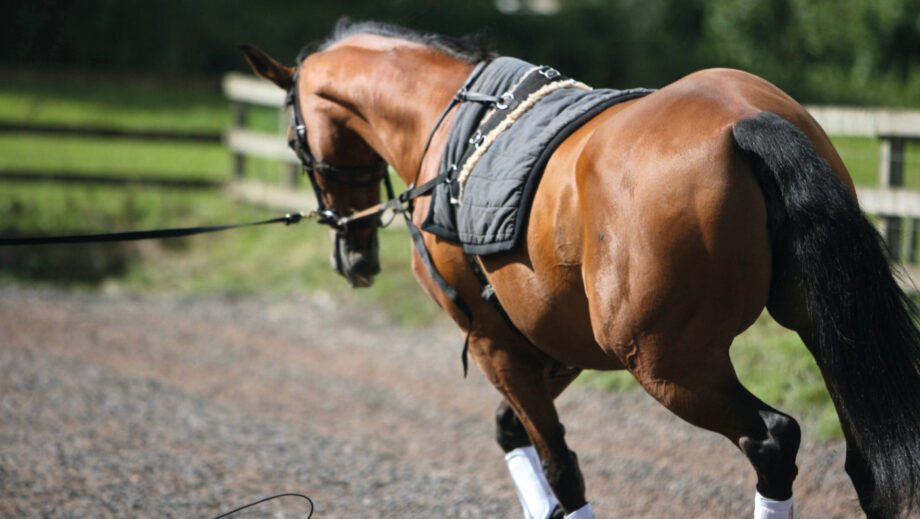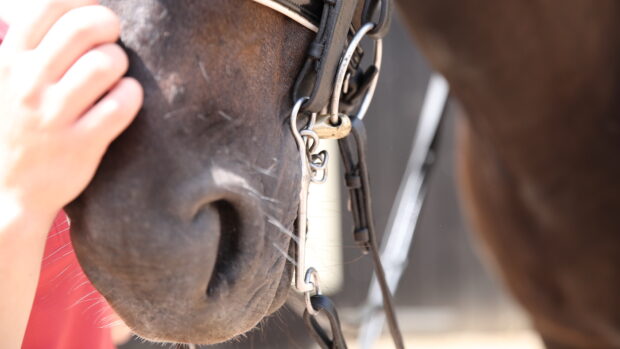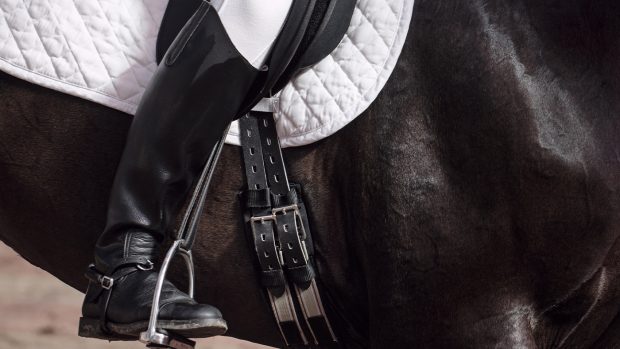Most riders who use auxiliary reins do so owing to others’ influence and their own lack of skill, research has found – and those who use them tend to have less knowledge of equine biomechanics than those who do not.
In a study published in ScienceDirect and presented at the International Society for Equitation Science conference (23–26 July), researchers investigated equestrians’ use of auxiliary reins, such as side- and draw reins. A survey, which had 570 responses, gathered data on demographics, behavioural factors relating to the use of auxiliary reins and riders’ biomechanical knowledge.
Among the results, 344 participants said they had used or would use auxiliary reins. When asked about knowledge level, 39% of total respondents felt they had moderate to good knowledge of equine biomechanics, but 280 participants, 81.4%, were unable to identify a balanced trot, from diagram sequences.
Lead author Mikaela Tapuska of the University of Edinburgh told H&H the aim of the study was to determine why equestrians used auxiliary reins, what keeps them reliant on the equipment, their perceptions about how the aids might influence horses’ movement and whether these perceptions were supported by evidence.
“We found that equestrians most often started to use auxiliary reins due to the social influence of others and their own lack of skill, either real or perceived,” she said.
Ms Tapuska added that most often, riders continue to use the auxiliary reins less because of others’ influence and more because it suits them, their horses and their ability and situation.
“Once human behaviours were established, perceived horse characteristics and lack of rider ability were the most prominent barriers to reduced auxiliary rein usage,” the study states. “Equestrians who presently used or would use [them] tended to have lower biomechanical knowledge scores than those who no longer used [them].”
Ms Tapuska said: “The perceived benefits of using auxiliary reins had become part of the solution to their riding-related challenges. But most equestrians did not demonstrate strong evidence-based knowledge of the possible effects of auxiliary reins on the horse’s movement.
“It was interesting how important auxiliary reins were suggested to be in making up for lack of skill – even when equestrians had likely gained more experience. We’ve often relied on educational interventions to improve horse welfare, which increase people’s knowledge. However in many of these cases the respondents indicated that they knew auxiliary reins weren’t an optimal approach, but used them anyway.”
Ms Tapuska said this work would be useful for coaches and trainers, who were found to hold “a huge influence” over students and clients.
“If we could get the governing bodies on board as well, that would really help influence change at every level of the sport, because changing behaviour in this sector relies very much on the social context,” she said.
“I hope this research inspires a conversation, or at least some reflection, regarding how we can do better in training upcoming equestrians.”
- Read the full paper
Prof Dr Inga Wolframm of the Van Hall Larenstein University of Applied Sciences, who supervised the work alongside Dr Victoria Lindsey-McGee from the University of Edinburgh, told H&H: “If we want to encourage meaningful change in the equestrian world we need to understand what drives people to do what they do.
“Interestingly, the vast majority of riders don’t start using auxiliary reins because they want to force the horse into a frame. More often, they believe they are not physically capable of achieving a training goal themselves, or they believe their horse isn’t.”
“Even though these two beliefs are closely linked, the distinction is important. The first is an internal barrier – a lack of perceived competence – the second is externalised onto the horse.”
Dr Wolframm added that although education is important, social context plays a “critical role” in equestrianism.
“The equestrian sector can sometimes feel fragmented, with different groups pointing fingers at each other. But ultimately, we all identify as horse people. If we want to move forward, we need to collectively embrace the principle of welfare; not just in words, but in deeds. And we need to create environments that support that principle,” she said.
“We need governing bodies to implement and enforce clear welfare standards. But informally, we need credible ambassadors at every level of the sport to model good practice. From elite riders to local trainers, from competition arenas to riding schools, the message has to be consistent and lived.”
- To stay up to date with all the breaking news from major shows throughout 2025, subscribe to the Horse & Hound website
You may also be interested in:




